What's New
Displaying results 1901 - 1910 of 4899
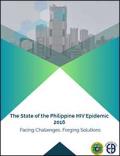
Resource | Publications,
This report provides the current state of the epidemic, drawing mainly from the HIV/AIDS and ART Registry of the Philippines, the latest projections from the AIDS Epidemic Modeling, and the most recent analyses of the Integrated HIV Behavioral and Serologic Surveillance. Best available evidence underscores the urgency to enhance and intensify interventions for key populations, specifically young males and transgender women who have sex with males (M/TSM) and people who inject drugs (PWID) who comprise a significant proportion of new infections. But in working with and among key populations, women—especially female partners of MSM and people who inject drugs—cannot be left behind if the country is to prevent further increase of HIV infection among pregnant women. This also takes stock of recent programmatic reforms and offers evidence to guide program and policy development. It documents the gains from recent enhancements to the country’s provision of HIV services (i.e. piloting of the rapid HIV diagnostic algorithm) and highlights persistent challenges in terms of linkage to care and viral load testing.
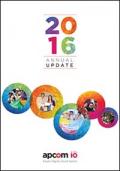
Resource | Publications,
Founded in 2007, APCOM is a coalition of members – governments, UN partners, non-profits and community based organisations – from Asia and the Pacific. APCOM represents a diverse range of interests working together to advocate on, highlight and prioritise issues that affect the lives of gay and bisexual men and other men who have sex with men (MSM), as well as other individuals of sexual orientation and gender identity minorities.
This report showcases APCOM's efforts in advocating for sexual health services, cultivating an enabling environment, generating and sharing strategic information, and building a cadre of advocates at all levels throughout the region.
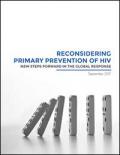
Resource | Publications,
Propelled by the introduction of powerful and life-saving antiretroviral medications, the increasingly bio-medicalized global HIV response challenges us to rigorously reimagine prevention. While this is a welcome development in the global response to HIV, access to medical interventions is hampered by the costs of medicines, healthcare, testing and monitoring, and the politics of funding. In addition, gay and bisexual men, people who use drugs, sex workers, and transgender people are not prioritized for antiretroviral treatment or are offered only a limited number of places in treatment programs because these groups are not seen as deserving. Moralistic decision-making about who should have access to treatment is common (e.g., the requirement of absolute abstinence from drug use as a condition for services).
While access to antiretroviral medication used prophylactically or as treatment for HIV is an urgently needed human right, primary prevention should be conceptualized more broadly than expanded coverage of antiretroviral medications.
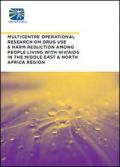
Resource | Publications,
Following a number of Operational Researches conducted with different focuses within the harm reduction and drug use fields, this Operational Research explores and assesses the situations and risks faced by People Living with HIV (PLHIV) who use drugs. There is no denying that PLHIV and People Who Use Drugs (PWUD) alike are stigmatized and highly discriminated against in our region, and PLHIV who use drugs are exposed to double stigma, often preventing proper access to essential life-saving services.
This report investigates and details the health-related harms, stigma and discrimination, service access and adherence barriers, as well as the impact of current (if existing) harm reduction strategies among PLHIV who use drugs. The results of this report should guide decision-makers and civil society organizations towards the provision of more comprehensive and accessible harm reduction and HIV services.
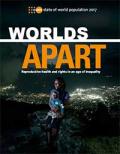
Resource | Publications,
In today’s world, gaps in wealth have grown shockingly wide. Billions of people linger at the bottom, denied their human rights and prospects for a better life. At the top, resources and privileges accrue at explosive rates, pushing the world ever further from the vision of equality embodied in the Universal Declaration of Human Rights.
Economic disparities are only one part of the inequality story. Many other social, racial, political and institutional dimensions feed on each other, and together block hope for progress among people on the margins.
Two critical dimensions are gender inequality, and inequalities in realizing sexual and reproductive health and rights; the latter, in particular, still receives inadequate attention. Neither explains the totality of inequality in the world today, but both are essential pieces that demand much more action.
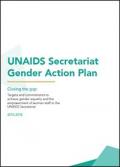
Resource | Publications,
The UNAIDS Secretariat Gender Action Plan - developed through a consultative, interactive process involving staff across the Secretariat– comprises measures to be taken in seven strategic focus areas, as well as six numeric targets for monitoring progress towards achieving gender equality in the Secretariat across all levels, with particular attention to senior positions. A central aim of the Secretariat Gender Action Plan is to reach 50/50 gender parity at all levels, but the plan goes beyond numerical targets, and is designed to nurture a supportive organizational culture for all staff.
Following consultation and review in 2015, the Action Plan was updated and extended to March 2018, giving the Plan an overall timeframe of five years: 2013 – 2018.
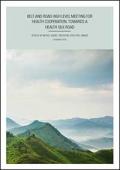
Resource | Publications,
The Belt and Road is about inclusiveness and connecting the dots across borders, issues and agendas for mutual benefit and development. It is a people-centred approach. Without this, there can be no transformation in health. The beauty of the Belt and Road is that it is about mutual respect and mutual benefit.

Resource | Publications,
For UNFPA, innovation means inclusively creating and scaling-up data-driven, sustainable and open solutions that accelerate the achievement of transformative results in the lives of women, adolescents and youth.
The UNFPA Innovation Fund, established in 2014 with an initial contribution from the Government of Denmark, was conceived "as a tool for generating a cultural shift within UNFPA by providing motivation and a mechanism for staff to generate, fund and implement innovative ideas." It has two main streams, culture and projects.
This short report showcases how UNFPA’s Innovation Fund has pioneered innovative strategies that are changing the way the organization works. It outlines what the Fund has achieved, who its partners are, what has been learned and its plans to move forward.
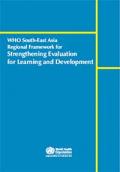
Resource | Publications,
The WHO South-East Asia Region’s Framework for Strengthening Evaluation for Learning and Development (FSELD) has been formulated to guide the Regional Office and WHO country offices in their evaluation work. Its provisions are consistent with the WHO Evaluation Policy 2012, Evaluation practice handbook 2013,1 and A framework for strengthening evaluation and organizational learning in WHO, 2015 (the “global framework”). The FSELD mirrors the structure of the global framework, and builds on a working paper that was developed after a series of consultations with regional departments and WHO country offices.
The objective of this FSELD is to strengthen the current decentralized evaluation function in the WHO South-East Asia Region, and further mainstream its activities. This will nurture the “culture of evaluation” and ensure that evaluation plays a critical role in improving performance, increasing accountability for results, and promoting organizational learning and development.
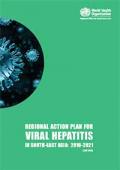
Resource | Publications,
The Action Plan (2016-2021) for addressing viral hepatitis in the WHO South-East Asia Region has been developed in consultation with Member States, community stakeholders, development partners, academia and professional societies. Drawing upon the Global Health Sector Strategy for Viral Hepatitis (2016–2021) and using the framework of universal health coverage to ensure that no one is left behind, the Action Plan provides a roadmap for priority areas of focus and interventions within the health and related sectors that are needed at the national level to mount an effective and efficient response to prevention, diagnosis, management and care of viral hepatitis.
With the goal of ending viral hepatitis as a public health threat by 2030, the Regional Action Plan will provide an actionable framework for implementing evidence-based interventions at scale. It will be informed through strategic monitoring of the response, that must be equitable and sustainable and allow for innovations for acceleration and reaching out to all in need with health services.





